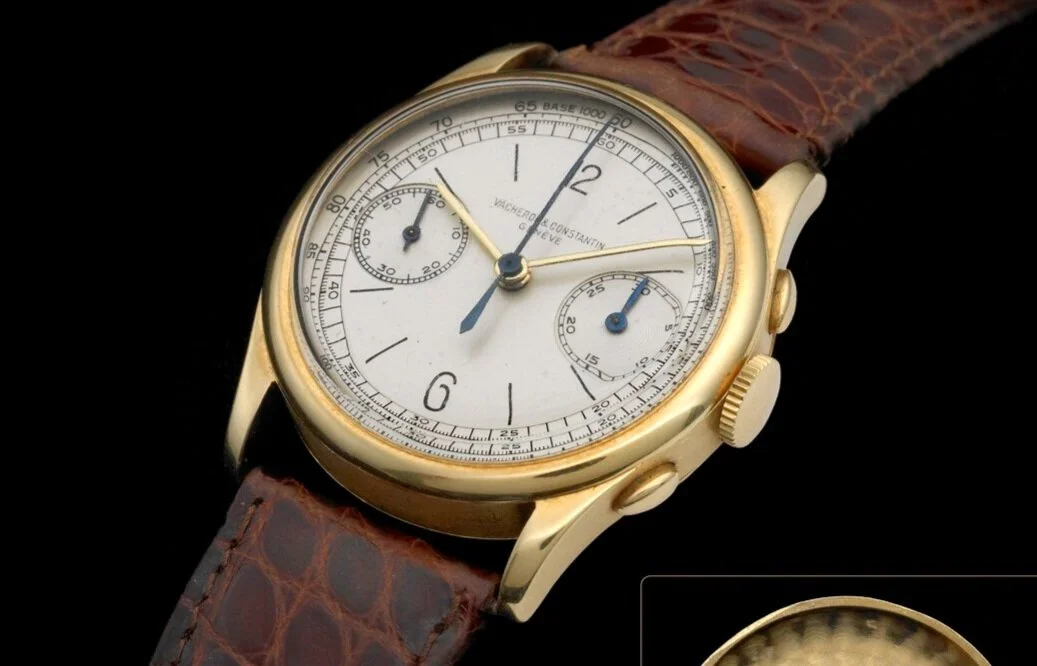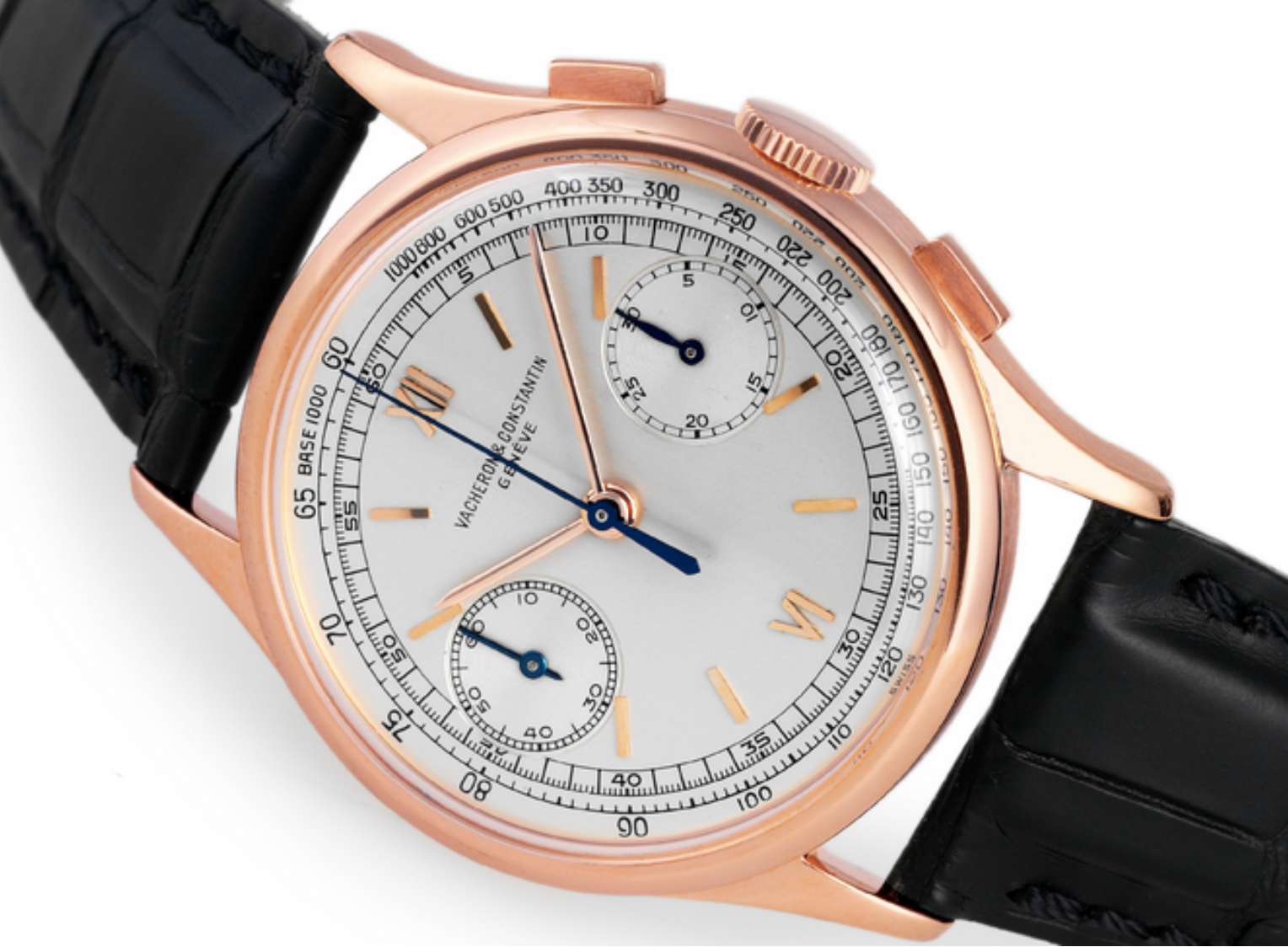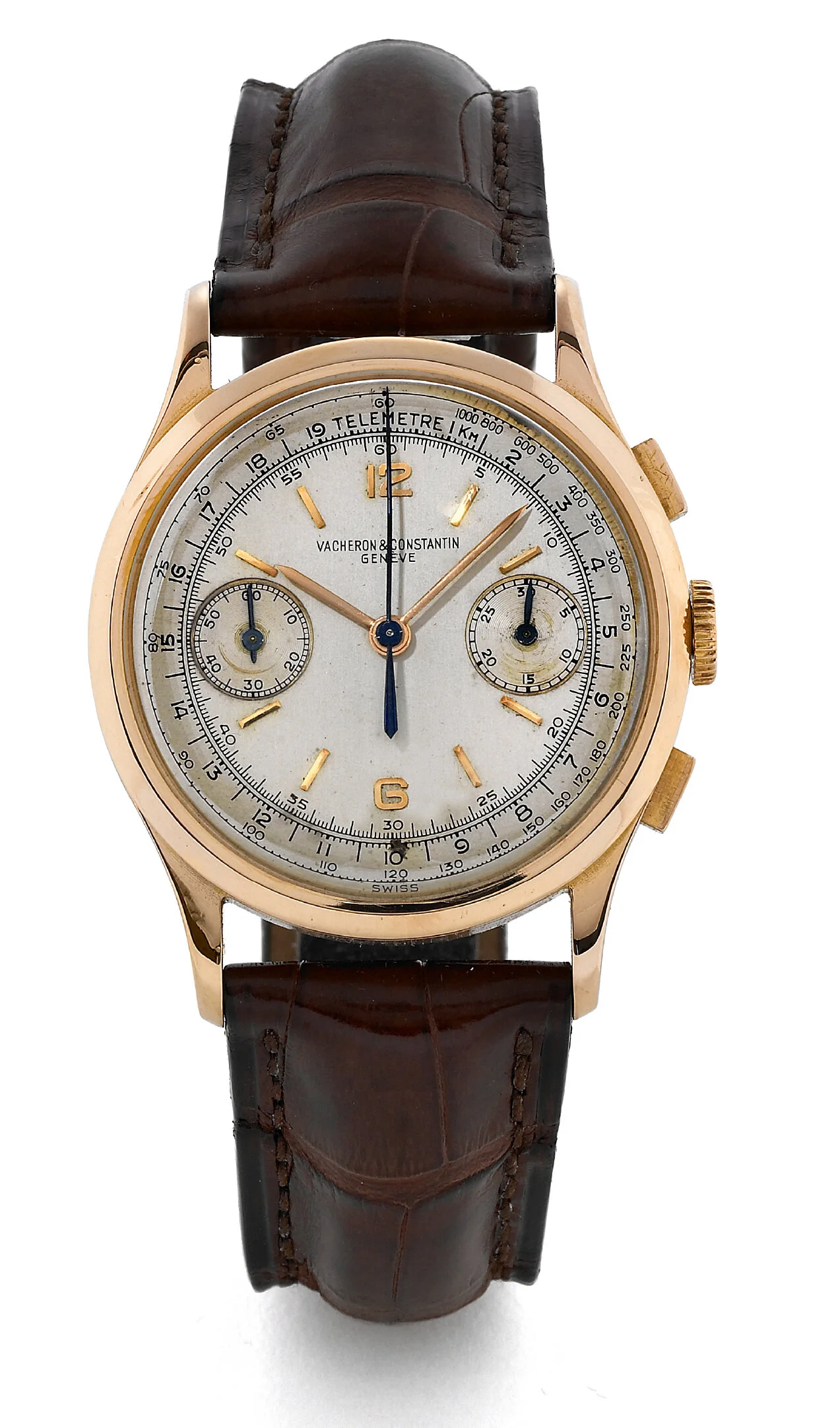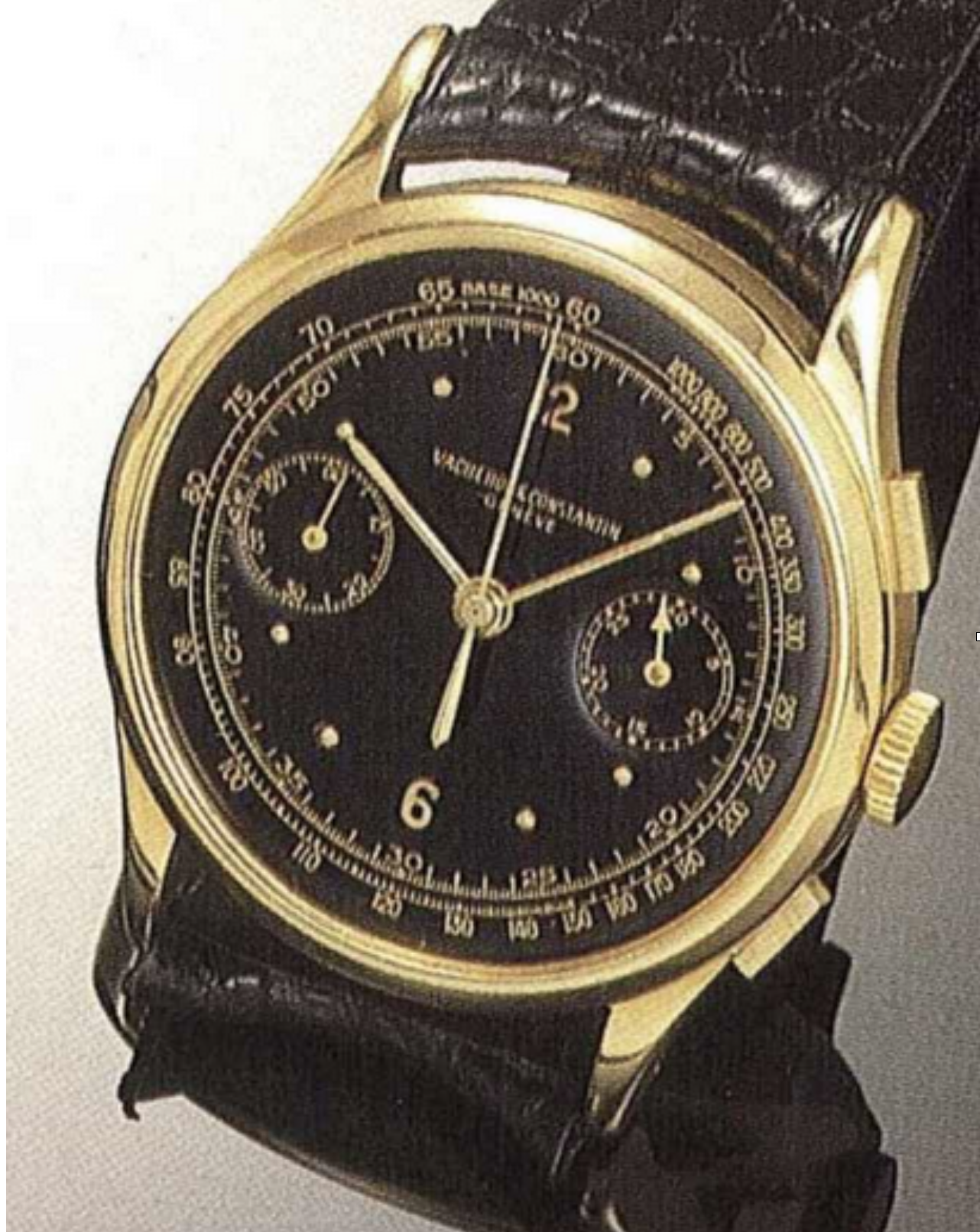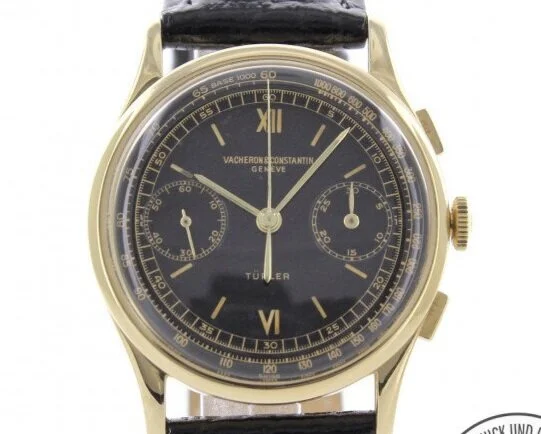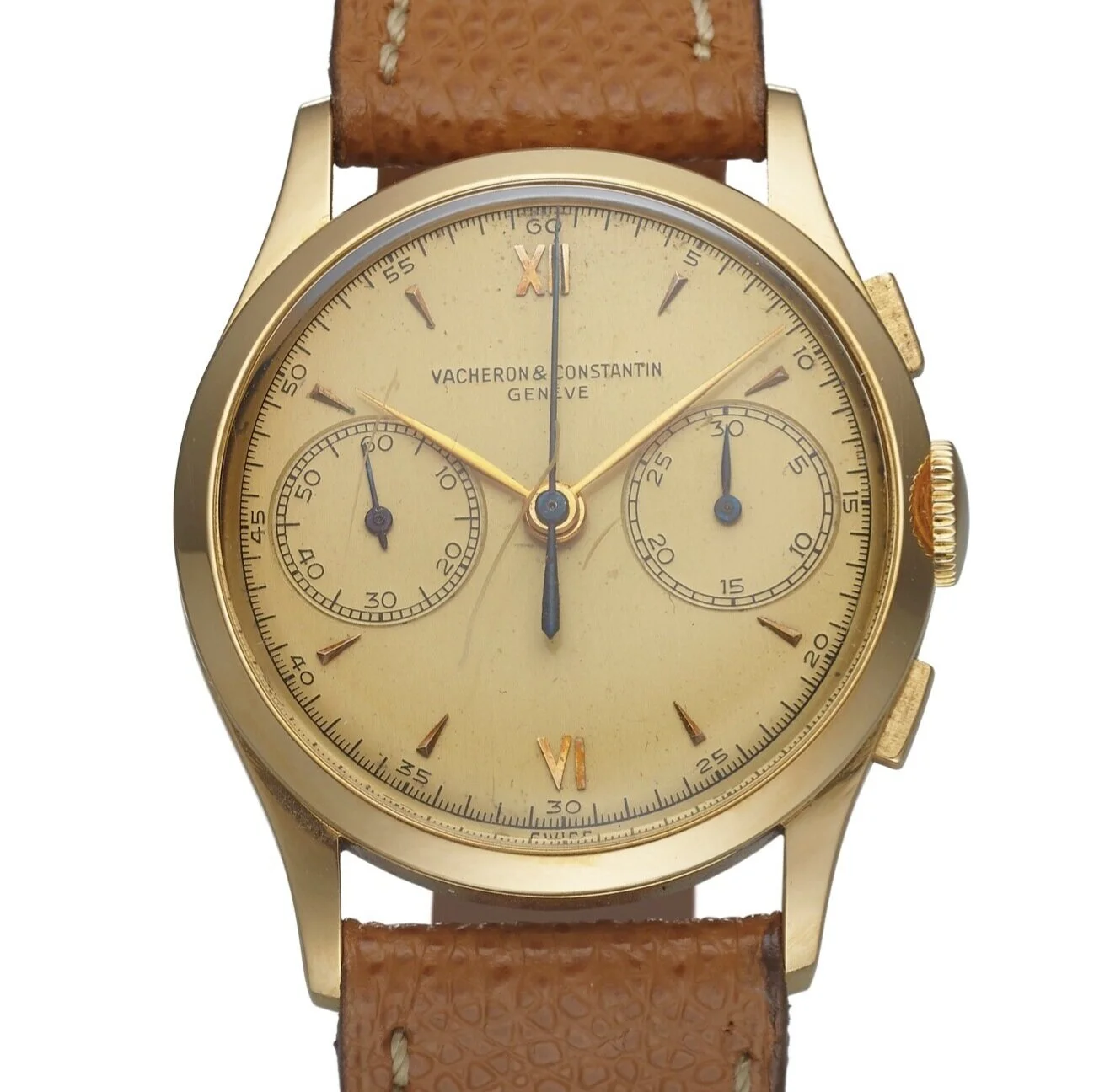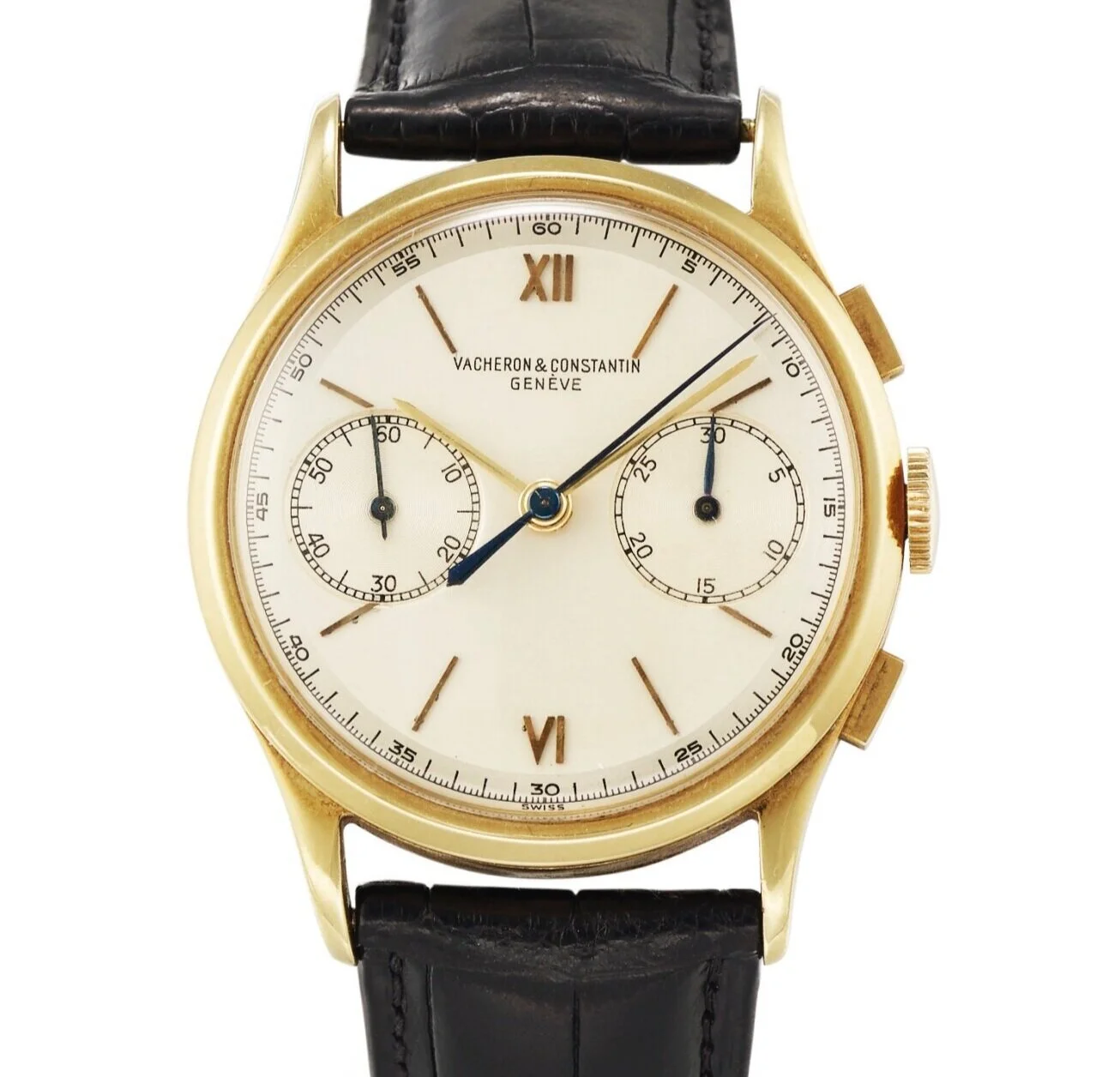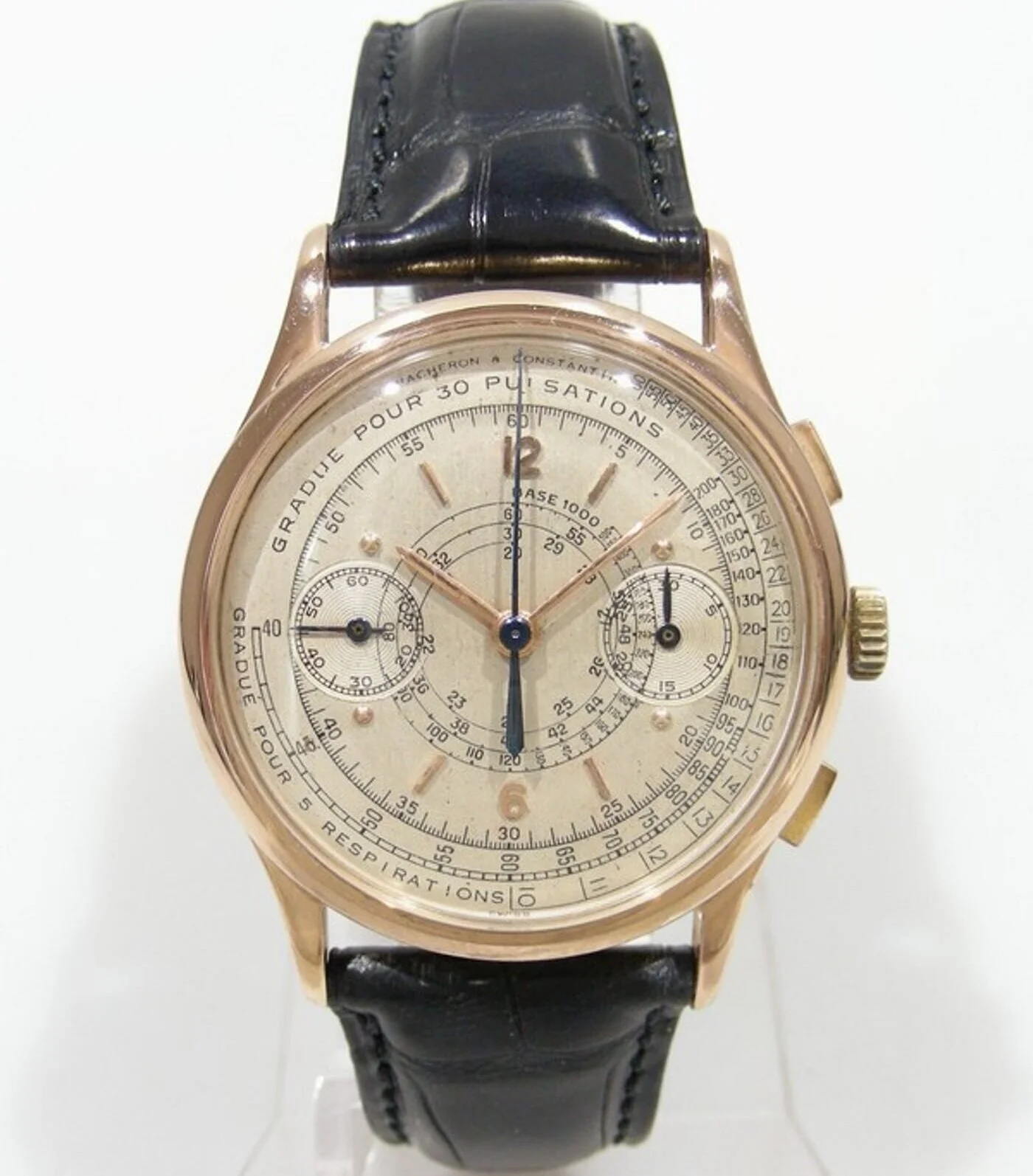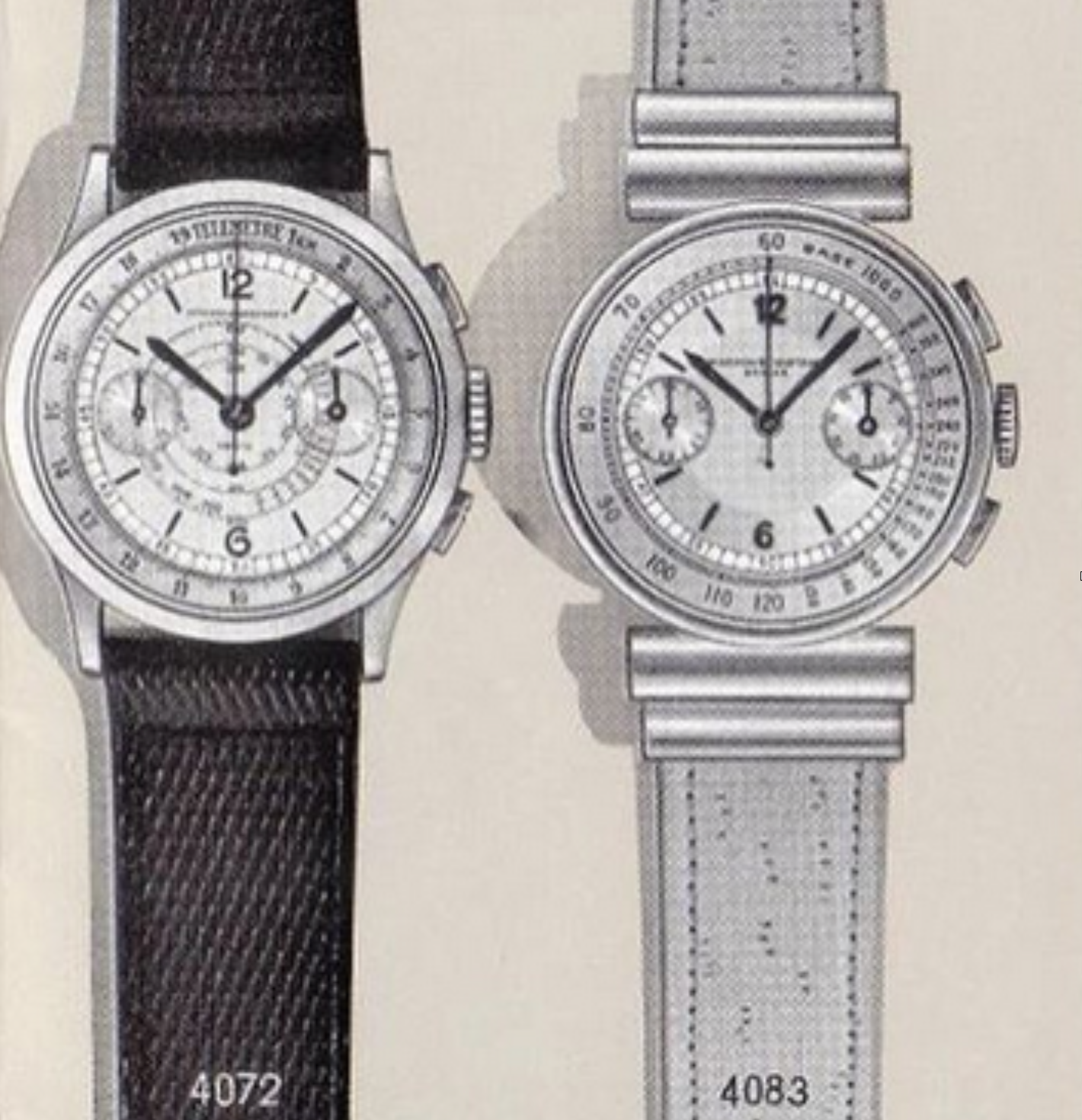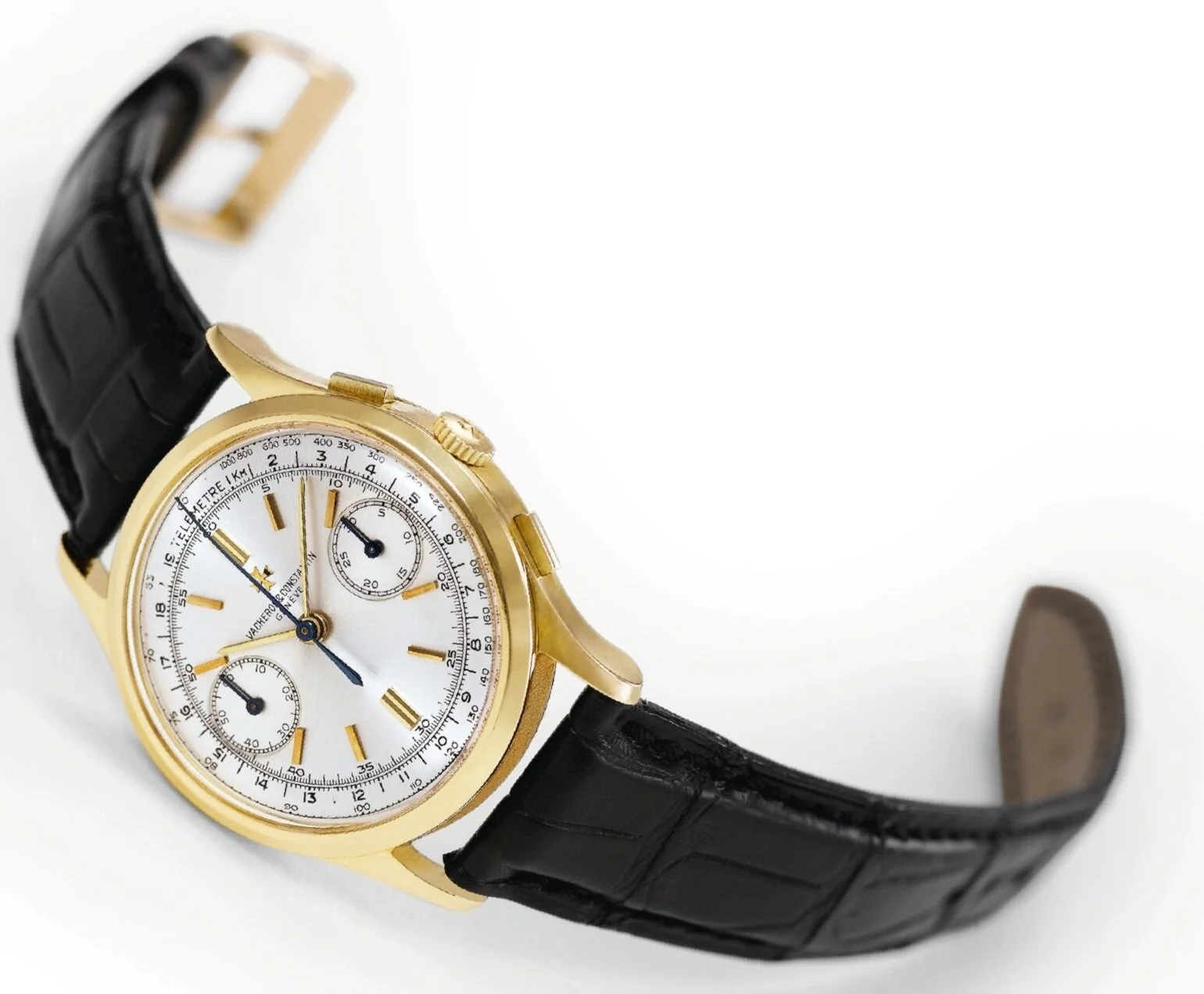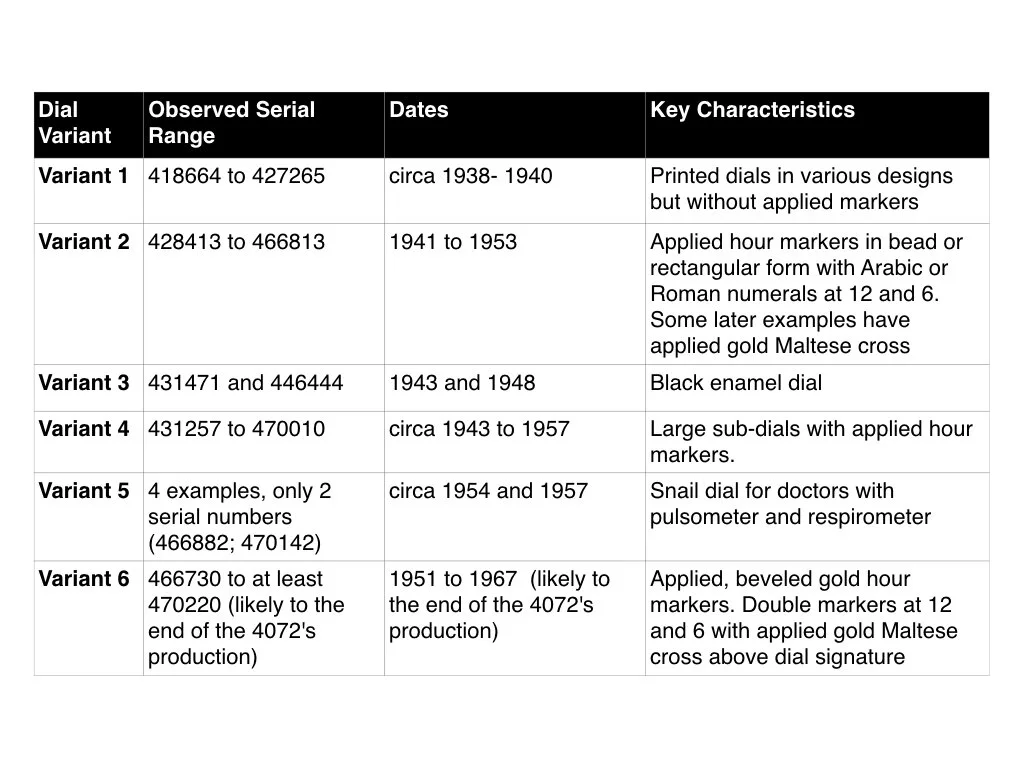By: Peter Toot
Peter Toot is a WOSTEP-trained watchmaker who studied horological conservation at West Dean College in England. He specializes in marine and pocket chronometer service and repair. Learn more about what he does at www.cdshorology.com.
Vacheron Constantin Reference 4072: Introduction
Vintage Vacheron Constantin chronograph wristwatches enjoy a justifiable reputation among a small group of collectors for their quality and attractive design, but better understanding of these watches might permit them to be more appreciated in the broader vintage watch market. This article aims to increase awareness by documenting varying dial characteristics of the reference 4072 chronograph wristwatch to establish a classification of dial variants. Vacheron produced the two-button reference 4072 from 1938 until the early 1970s. Total production only reached 1178 examples in three metals: yellow gold, rose gold and stainless steel with a small number of two-tone watches (plus the possibility of several examples in white gold).[1] The classification system proposed in this article is the result of an examination of over eighty reference 4072 examples from throughout its production period as well as Vacheron Constantin advertising from the era.
Establishing reference and temporal accuracy of the different components of a single watch is vital to verifying authenticity and establishing value. Dials are one of the best aids in this process. The most important question about the dial should be “Is the dial authentic?” In the specific case of the reference 4072 dial that question should be “Does this dial have design elements consistent with the brand and with the range of dials seen on this reference?” The next question should be “Even if the dial is correct for the reference, is it correct for the reference for the production date of that particular watch?” This question addresses a growing problem in the vintage watch field as more watches are appearing for sale that have been pieced together from the best parts of different watches. As a result, even though a dial is an authentic Vacheron & Constantin dial from a reference 4072, it might not have been originally assembled and sold with its current case or movement. This situation can also be the result of replacement of the original dial with a service dial by Vacheron & Constantin. In this case, the dial change would have been registered in the Vacheron & Constantin archives.[2] The last question that should be asked about the dial is whether it has been cleaned, reprinted, or otherwise restored. This topic can have significant impact on value, but is a complex issue best left for discussion in another article.
Common Characteristics
The dial variants described below with their timelines provide a guideline to answer some of the questions raised above. Six different variants have been observed in the survey of dials from reference 4072 examples. All six variants share the following features:
Two subsidiary dials. One on the left for sweep seconds with Arabic numbers at ten-unit intervals and one for a chronograph minute recorder on the right of the dial with numbers at five-unit intervals.
Seconds track divided in fifths of a second. This track can be closed or open but if it is open, the open side must be toward the inside of the dial. Every fifth second, e.g. 5, 10, 15, is printed in Arabic numbers.
“VACHERON & CONSTANTIN” signature with ampersand and “GENÈVE” under it, with an accent on the second E. The only exception to this are the very rare Variant 5s with their snail dials (as defined below). These watches may present the brand signature in a curved or standard form but in both cases without the word “GENEVE”. (The company officially changed its name to Vacheron Constantin in 1972. No reference 4072 has been noted with the new name without the ampersand. But, because the production run of 4072s extended past 1972, such a dial seems possible.)
The six different dial variants for the reference 4072 seen in this survey are as follows:
Variant 1
Variant 1 dials present a variety of designs, but all with entirely printed dials and no applied hour markers. Hour markers are printed both as rectangular markers and Arabic numerals for 12 and 6. Several sector-dial examples fit in this group. This variant began early in the production of the 4072, with serial numbers from the watches surveyed beginning with 418664 from the late 1930s (Image 1) to 427265 (Image 2).
Image 1 | Source: Antiquorum
Image 2 | Source: Antiquorum
Variant 2
Variant 2 was the most common variant in the survey with 41 examples. This dial features applied hour markers in bead or rectangular form with Arabic or Roman numerals at 12 and 6 o’clock, in some cases also at 2, 4, 8, and 10. See Images 3, 4, and 5 below.
Image 3 | Source: Antiquorum
The seconds track is open on some Variant 2 dials such as the watch from 1951 pictured above in Image 3 and the watch from the early 1950s in Image 5. In other cases, the seconds track is closed, such as in Image 4.
Image 4
Image 5 | Source: Antiquorum
Outer scales for Variant 2 include tachymeter, telemeter in kilometers or miles, and pulsometer. The serial numbers of the watches surveyed with this type of dial range from 428413 from 1941 to 466813 circa 1953.
Variant 3
Variant 3 is instantly recognizable due to its black enamel dial. The least seen of the reference 4072 dials, only two examples were found in this survey. The dial is produced by baking enamel onto the dial blank and then affixing the applied gold hour markers. The watch in Image 6 is from circa 1948 with a serial number 446444. Image 7 shows the second black-dial reference 4072, double-signed Turler, with serial 431474 from circa 1943.
Image 6
Image 7 | Source
Variant 4
Variant 4 features applied gold hour markers with Roman numerals XII and VI with open seconds track and no outer scales. Additionally, the sub-dials are larger than other variants. This appears to have been a variant added in the early 1940s. Observed serial numbers range from 431257 circa 1943, below in Image 8, to 470010 circa 1957 in Image 10.
Image 8 | Source: Antiquorum
Image 9 | Source: Antiquorum
Image 10 | Source: Sotheby’s
Variant 5
The snail scale at the middle of the dial is unique among reference 4072 dial designs and defines Variant 5 dials. The pulsometer and respirometer scales signal these watches were meant for doctors. Also note the Vacheron & Constantin signature located by the outer scales in one example. This snail dial design appears on the watch in Image 11 as well as a Vacheron & Constantin catalogue from the era in Image 12.
Image 11 | Source: Hodinkee, via Le Collection’heure
Image 12
Variant 6
Variant 6 is similar to Variant 3 in that it features applied gold hour markers and features outer scales such as the tachymeter and telemeter. The double applied hour markers at 12 and 6 o’clock with the applied gold Maltese cross above the dial signature define this variant (the applied gold cross was used on a limited number of Variant 2 dials). Also note the strong beveling of all hour markers. The seconds track is open. The Swiss signature appears at 6 o’clock outside of the tachymeter scale. The earliest Variant 6 in this survey was serial number 466730 circa 1951 seen in Image 13. The production dates for this variant in the survey extend to 1967 (Serial number 470171, Image 14) and presumably onward to the end of production of the reference 4072.
Image 13 | Source: Antiquorum
Image 14 | Source: Phillips
Image 15 | Source: The Watch Collectors
Intra-Variant Variations
Within each group of dials classed in a single variant, there can be significant variation. Intra-variant differences are attributed in part to the differing use of one or several of the following features:
Tachymeter: A scale usually located toward the outside of the dial that measures how often an event occurs per hour when the elapsed time of a single one of those events is measured with the chronograph.
Telemeter: Another scale usually located toward the outside of the dial that tells the distance at which an event happens by using the chronometer to time how long the sound of that event takes to arrive to the wearer of the watch. The telemeter scales on the reference 4072 were most commonly in kilometers though several watches have the distances denoted in miles.
Pulsometer: A scale typically toward the outside of dial that tells the heart rate per minute when the chronograph is used to measure the elapsed time to reach a certain number of pulses, typically 30 pulsations.
Respirometer: Similar to the pulsometer but used to calculate how many times a patient is breathing per minute based on the elapsed time of a fixed number of respirations.
Applied hour markers: While dial Variant 6 is based on the consistent use of the beveled applied hour markers, various dial marker styles are noted within other single variants. For example, Variant 3, was produced with Roman and Arabic hour markers as well as bead and rectangular markers of various sizes.
See the table below for serial number ranges and production dates for each variant. These numbers are not definitive; they suggest a range based on the watches in this survey. It is probable that other examples will extend these ranges as they are documented. The author would appreciate any information from owners of reference 4072s.
It is not known how many different dial makers produced dials for the reference 4072. Different dial variants overlap chronologically and this might be explained by different dial makers contributing dials concurrently.
This survey of reference 4072s found several watches with dials that were not consistent with the Vacheron Constantin designs. Beyond issues of refinishing or cleaning, these dials included design elements that suggested inauthenticity. The first of these watches is included as Image 16 below. Note the font of the Vacheron & Constantin signature with its uncharacteristically pronounced serifs. The dial lacks the GENEVE under the brand name that is a constant in all dials except the snail tachymeter Variant 5. The seconds track is open but it faces away from the center of the dial instead of toward it, something not seen in any of the other dials. While one unusual feature might raise a flag, multiple inconsistencies generate too much doubt for this dial to be considered as authentic.
Image 16
The watch pictured below in Image 17 shows several questionable features. The beige patina is unique in the survey. The combination of red and blue outer tracks has also not been seen in any other watches in the survey and their fonts are not characteristic of 4072s. Finally, the minute counter sub-dial shows long demarcations at 3, 6, and 9 minutes. This is not typical of 4072 dial design.
Image 17 | Source: Bonham’s
Vacheron Constantin Reference 4072 Guide
Based on a survey of 80+ reference 4072 examples
Vacheron Constantin Reference 4072: Conclusions
Understanding entirely even one single vintage watch reference presents a formidable task. There remains much to be learned about Vacheron's reference 4072 chronographs. More and better information about this reference will allow collectors to better scrutinize watches and hopefully will help limit the number of inauthentic watches that are offered. The increased understanding should also allow the watch to be recognized by the vintage market for what it is: a very rare timepiece with a level of design and finishing that places it at the highest level among 20th-century chronograph wristwatches.
Footnotes:
[1] Ghotbi. The History of the Vacheron Chronograph. The Hour Lounge.
[2] Selmoni. Electronic correspondence.
